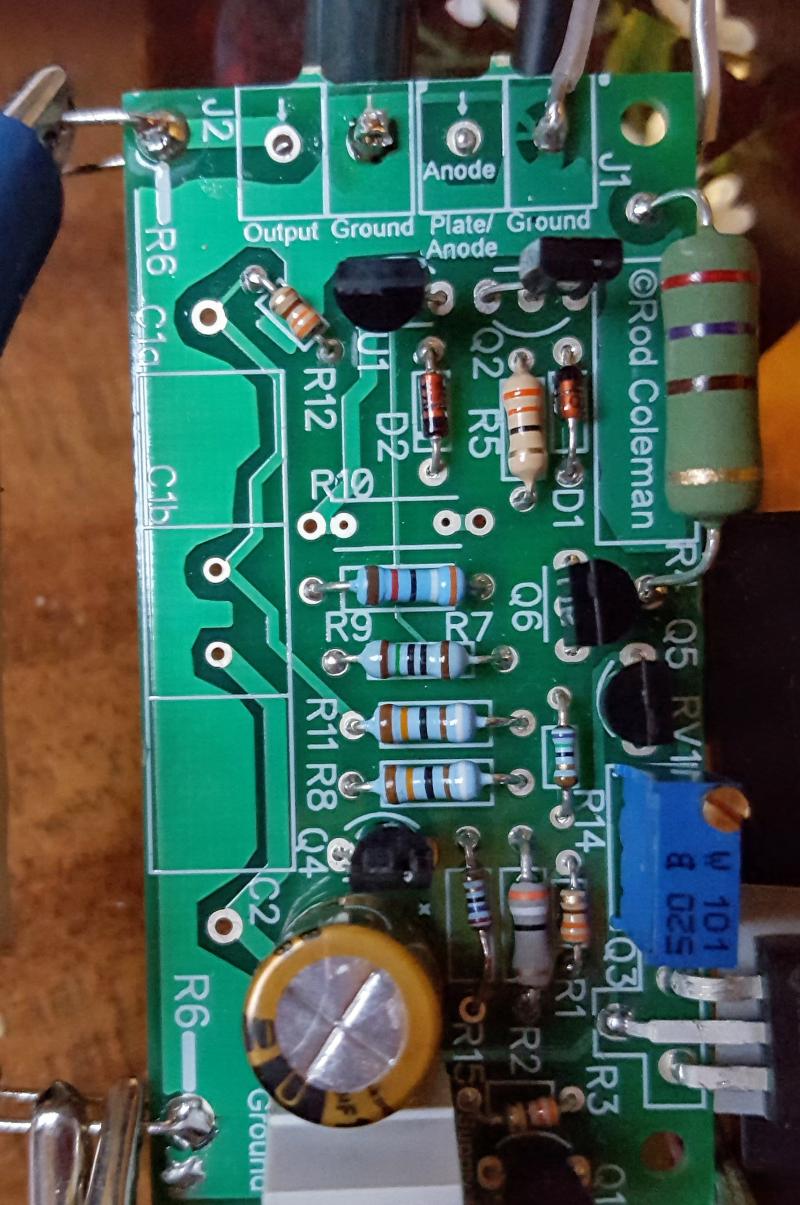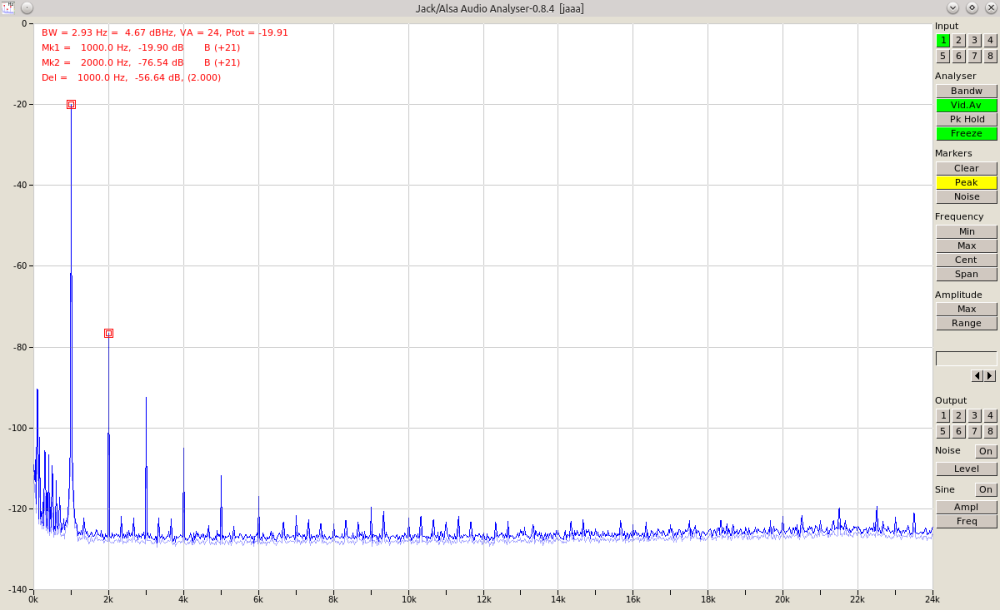Shunt Cascode - Power Tube Driver
The Shunt Cascode stage, developed by Rod Coleman.
Intended for use as a power tube driver stage with very high gain (100-200x).
Also works to great advantage as an RIAA EQ stage.
I have used a Shunt Cascode stage since 2005 as a driver stage for my 300B-SE power amplifier. The performance in terms of sound quality is subjectively better than any other I have tried, and has many practical advantages. Most notably, the high gain, which allows a system configuration with a DAC driving a large power tube, like the 300B or GM-70, with only this PCB and a low-cost driver tube, such as the Russian 6Э5П (6E5P). Although this tetrode has a triode-connected µ of less than 60, in shunt cascode, with an output resistor of 20-27K, it has a gain of 140 - 200x - leaving plenty of room for a volume control. In my experience, eliminating gain- or buffer-stages reduces the order of harmonics in the final output, and always improves sound.
For all-analogue systems, shunt cascode can be implemented in only three stages from MC cartridge, to 300B grid, complete with EQ.
This page is the web home of a practical shunt cascode kit: PCB + parts to allow a known-good build, without the usual risks - like instability - from disrupting an amplifier construction.
Shunt Cascode PCB V1

Shunt Cascode PCB V1
This page will give updates and specifications for the DIY self-assembly kits - to be offered here.
Characterisation Data:
Harmonic Spectrum (for 1kHz ~50V rms - 150V pp)
Note the natural decay in the Harmonic series. This form is preserved across a wide range of output amplitude, and evidence of good open-loop linearity, not reliant on cancellation techniques.

Development Schedule:
- December 2016: PCB version received, assembled and tested. The PCB includes a purpose designed shunt-regulator, to provide the cascode voltage. This allows a driver-stage to be built using only a rough rectified dc supply.
- January 2017: Self-Assembly Kit available, for the entertainment of DIY experiments. A pair of PCBs, and all the parts to build a 50Vrms (150Vpp) power-valve driver. It can easily be adapted for other valves, and other uses, such as a superb RIAA EQ stage.
- Manual available Here: Assembly instructions, and Using the Shunt Cascode Explorer Kit
- Want to explore? Try a ready-to-build kit, with all the parts to achieve the same spectrum shown above at 150Vpp. Available for GBP 33, including trackable shipping, PayPal. Please write to dht {a} lyrima.co.uk and I can prepare a PayPal invoice, or supply more information.